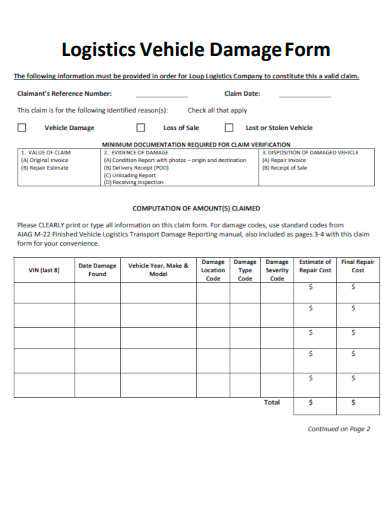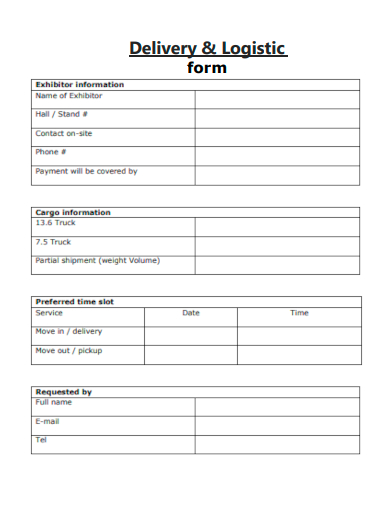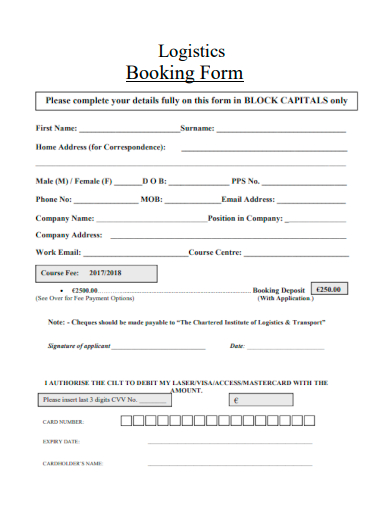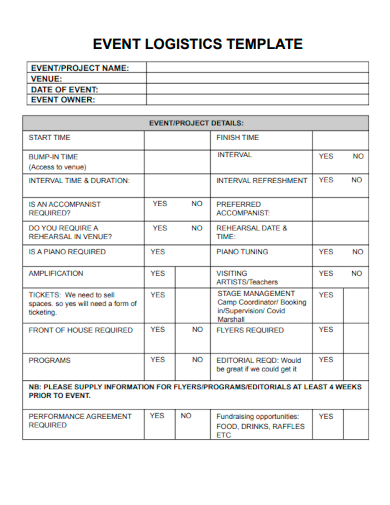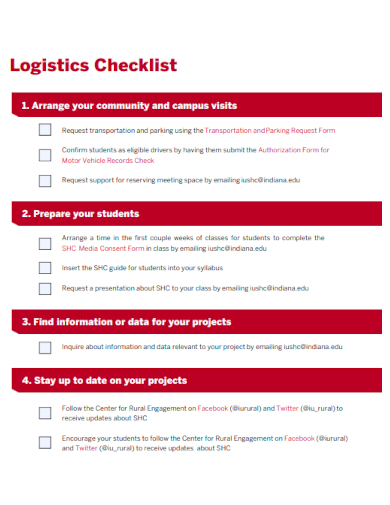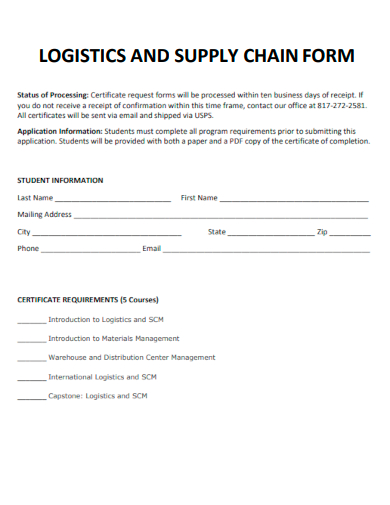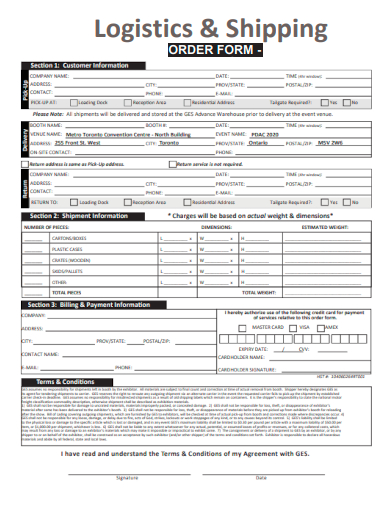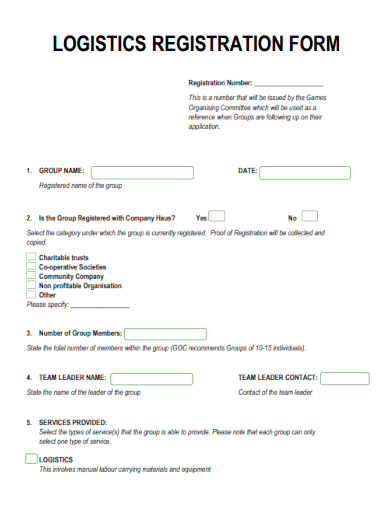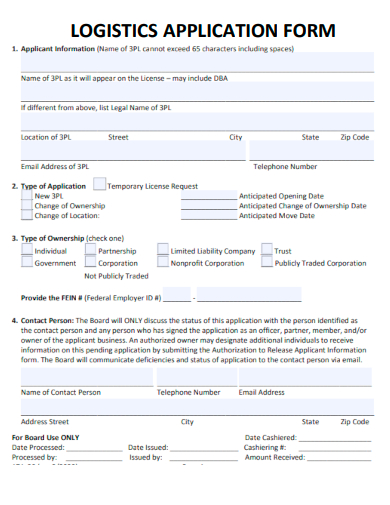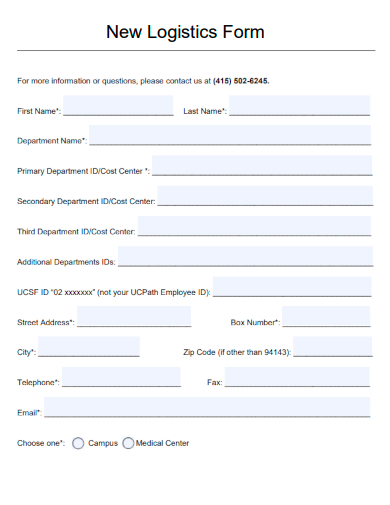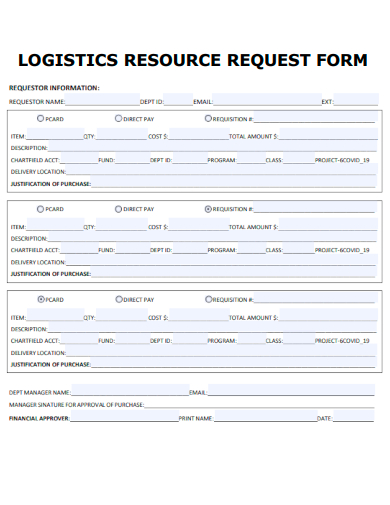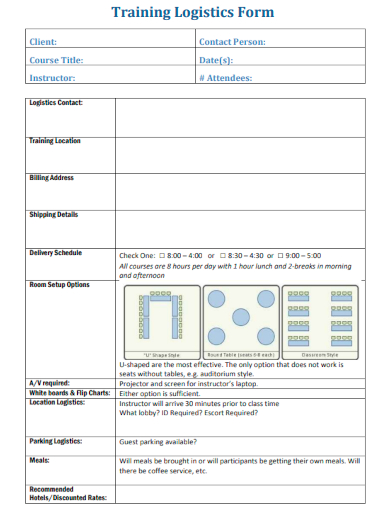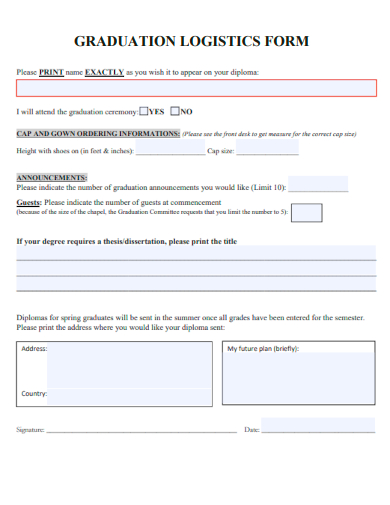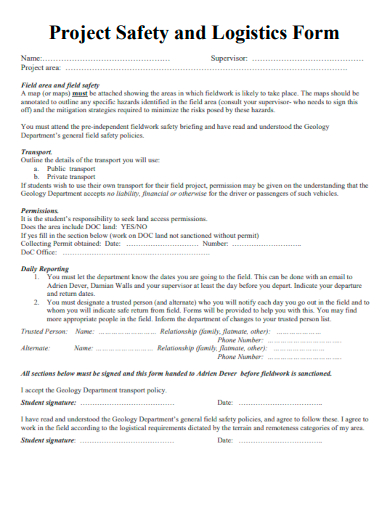Efficient logistics is vital for thriving transportation and delivery sectors. Introducing our Sample Logistics Form, an essential registration form tailored for businesses seeking robust logistics management. Equipped with comprehensive fields, this form decodes the intricacies of supply chain processes, ensuring each consignment reaches its destination promptly. Delve into this registration tool to elevate your operations and strengthen your logistics capabilities.
18+ Logistics Form
IT Logistics Feedback Form
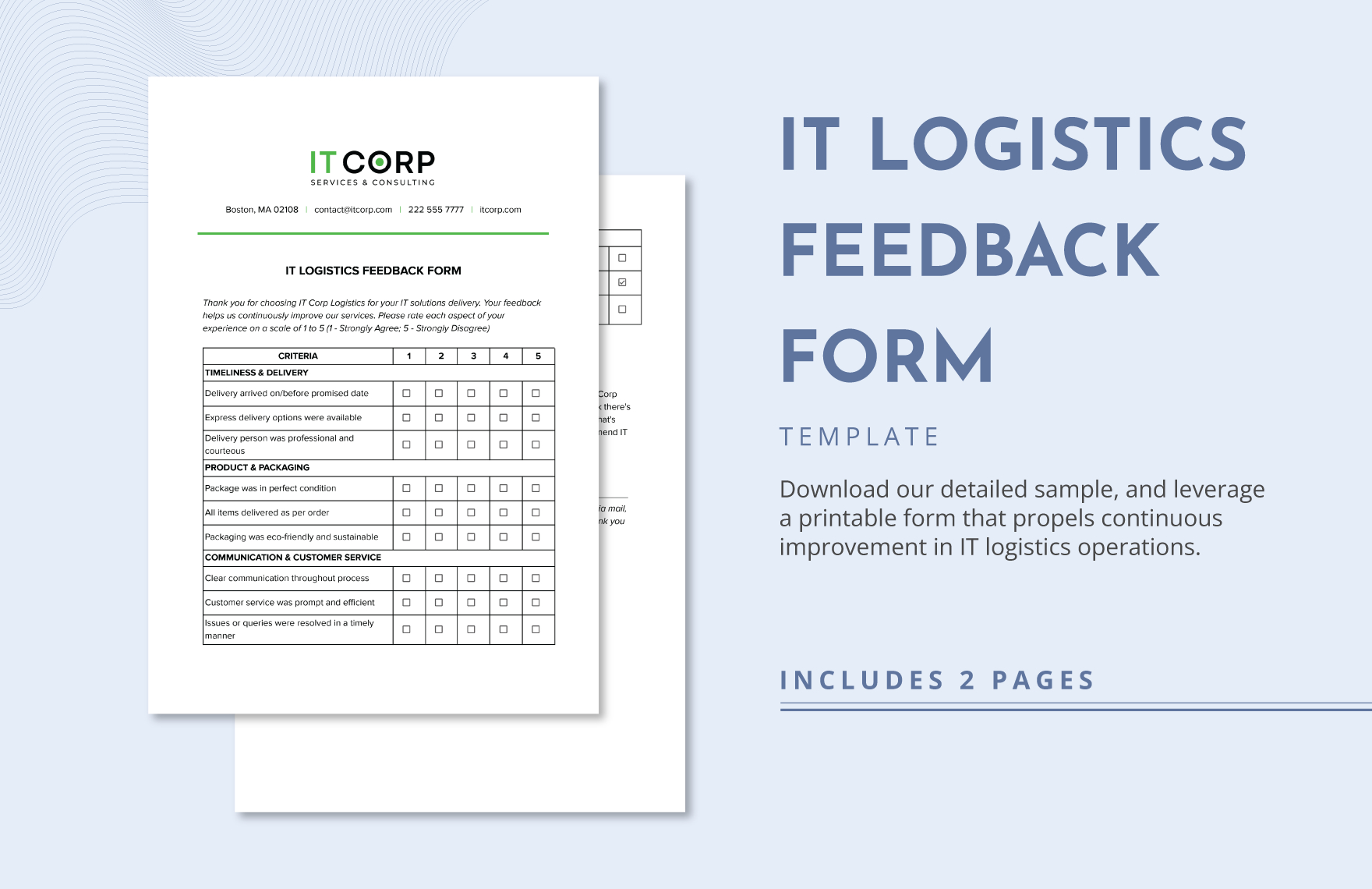
Transport and Logistics Invoice Approval Form
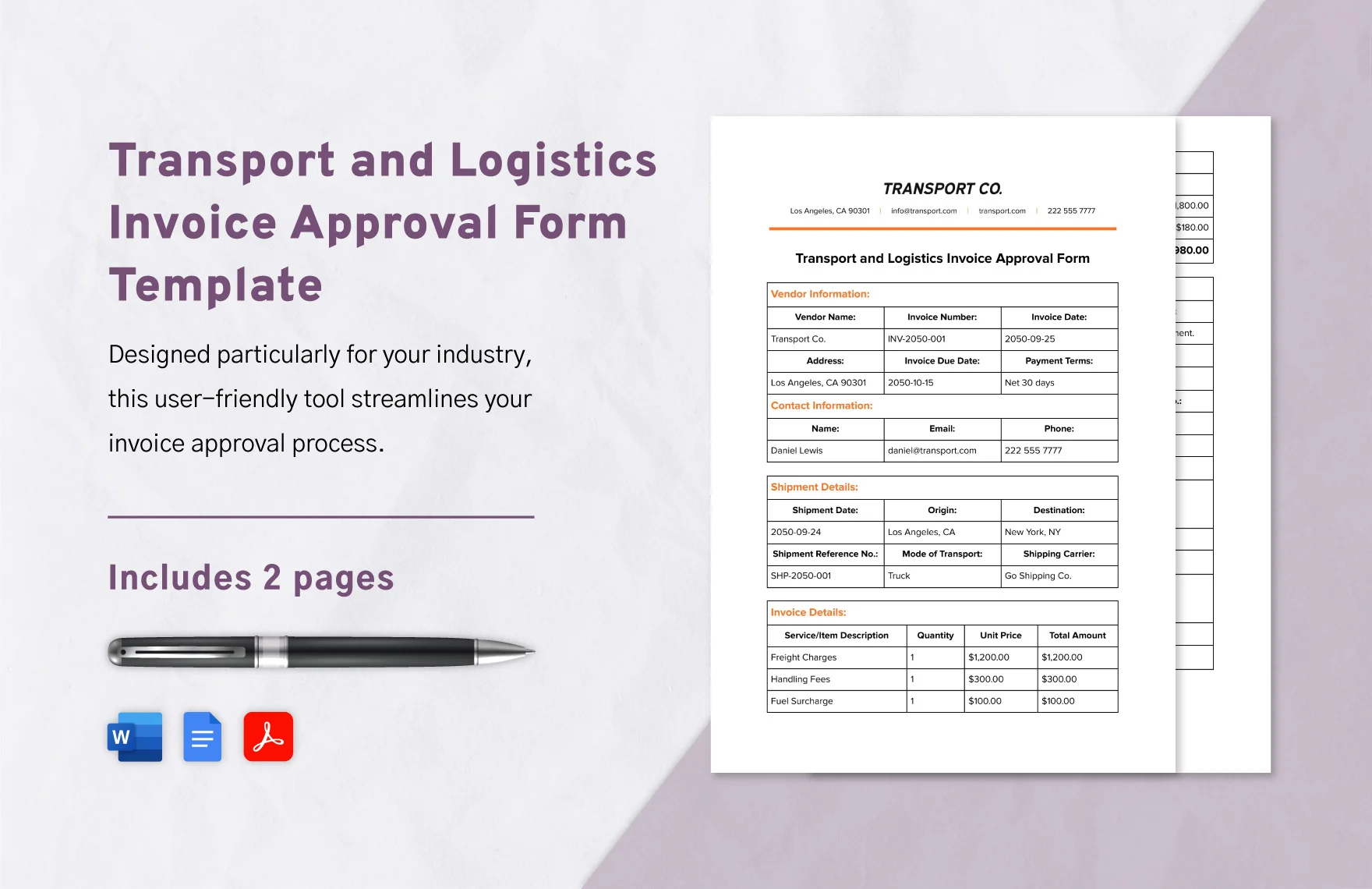
Transport and Logistics Service Evaluation Form
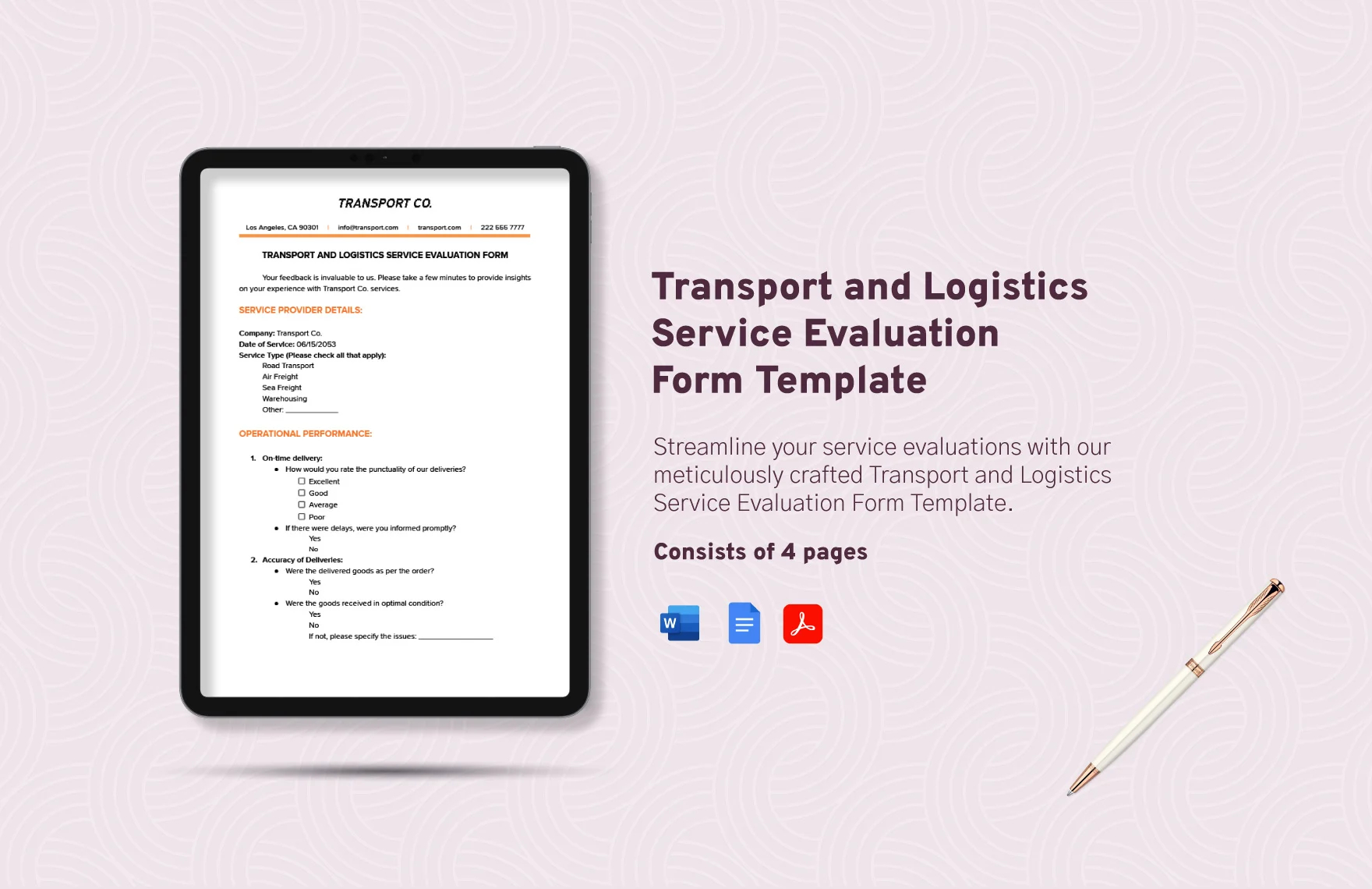
1. Sample Logistics Vehicle Damage Form Template
2. Sample Delivery Logistics Form Template
3. Sample Logistics Booking Form Template
4. Sample Event Logistics Form Template
5. Sample Logistics Checklist Form Template
6. Sample Logistics & Supply Chain Form Template
7. Sample Logistics & Shipping Order Form Template
What is the Logistics Form?
A logistics form is a structured document or digital tool used by businesses, primarily those in the shipping, transportation, and supply chain sectors. It’s designed to capture, organize, and process essential information about the movement, storage, and handling of goods, both within a country and internationally. In today’s fast-paced world where timely deliveries and efficient handling are paramount, such forms become invaluable assets to streamline operations.
The Importance of a Logistics Form
It’s not just about recording information; a well-structured logistics form ensures that all necessary details are accounted for, reducing the chances of errors and delays. Think of it as a systematic way of ensuring goods are sent, received, stored, or transported with maximum efficiency and minimum hitches.
For businesses, this form can also serve as a point of reference for customer inquiries, internal audits, or when any dispute arises about shipments. It provides a tangible record of transactions, ensuring transparency and accountability in the logistics process.
Digital vs. Physical Forms
With the advent of technology, many logistics forms have transitioned from paper-based formats to digital ones. Digital forms offer advantages like instant data sharing, easy updates, and integration with other software systems. They can be filled out on devices, sent electronically, and stored in cloud databases, making retrieval and referencing simpler. However, some businesses still prefer traditional paper forms, especially when they need physical signatures or when operating in areas with limited internet connectivity.
Adapting to Various Needs
One size does not fit all in the logistics world. Depending on the type of goods, destination, mode of transportation, and specific business needs, the logistics form can vary greatly. Some might be detailed, capturing intricate data, while others might be more generic. The key is to ensure that the form is tailored to capture all necessary information relevant to the particular logistics operation.
What Forms are Used in Logistics Management?
Bill of Lading (BOL)
This is a critical document in the shipping industry. It acts as a contract between the shipper and the carrier, detailing the type, quantity, and destination of the goods being carried. The Bill of lading (BOL) serves three primary purposes: a receipt for goods shipped, evidence of the contract of carriage, and a document of title.
Packing List
A packing list accompanies shipped goods and provides detailed information about the package contents. It may include item descriptions, quantities, weights, and packaging type. It helps in the efficient handling and verification of goods upon receipt.
Commercial Invoice
This is a bill for the goods shipped from the vendor to the buyer. It’s essential for customs clearance as it provides a basis for determining customs duties. The commercial invoice typically includes seller and buyer details, description and quantity of goods, price, terms of sale, and shipping details.
Purchase Order (PO)
A Purchase Order (PO) is a document sent from a buyer to a vendor to authorize a purchase. It specifies the types, quantities, and agreed prices for products or services. In the realm of logistics management, it serves as proof of what was ordered, helping in reconciling shipments received.
Delivery Note
This is a document that accompanies a shipment of goods, providing details about the contents and instructions for the recipient. It’s proof that goods were delivered to the intended recipient in the stipulated condition. Typically, the recipient signs the delivery note, which the shipper keeps as proof of delivery.
Customs Declaration Form
Used in international shipping, this form provides customs officers with detailed information about the nature, origin, and value of the goods being imported or exported. It helps authorities determine whether the goods can legally enter the country and what duties or taxes should be applied.
Warehouse Receipt
When goods are stored in a warehouse, a warehouse receipt is issued, detailing the stored items’ nature, quantity, and condition. It’s a document that provides proof of ownership and can sometimes be used as collateral for a loan.
Freight Bill
This is an invoice from the carrier to the shipper or consignee for transportation services provided. It outlines the charges involved in transporting the goods and can include additional charges like insurance, fuel surcharges, and accessorial fees.
In the intricate web of logistics management, these forms help maintain order, efficiency, and accountability. They not only streamline operations but also serve as evidence and references in case of discrepancies or disputes. As the logistics industry evolves, so do these forms, adapting to new technologies and changing needs.
8. Sample Logistics Chain Management Form Template
9. Sample Freight Logistics Bill Form Template
10. Sample Logistics Registration Form Template
11. Sample Logistic Application Form Template
12. Sample New Logistic Form Template
13. Sample Logistic Resource Request Form Template
14. Sample Training Logistic Form Template
15. Sample Graduation Logistic Form Template
16. Sample Project Safety and Logistics Form Template
How do I Create a Logistics Form?
Before diving into the design and details of your logistics form, it’s imperative to have a clear understanding of its purpose. Are you creating it for internal tracking, customer documentation, or regulatory compliance? Knowing the objective will guide the content, layout, and features of your form.
Gathering Essential Information
The logistics sector encompasses a vast array of data points. At the core, consider the following for inclusion:
- Shipper and Receiver Details: Name, address, contact information.
- Product Details: Description, quantity, weight, dimensions, and any special handling instructions.
- Transportation Details: Mode of transport (air, sea, rail, or road), carrier details, expected delivery date, and tracking number.
Choosing the Right Format
Depending on the preferred method of use (digital or paper-based), decide on the format:
- Digital Forms: These are convenient for businesses that want to store data electronically, share instantly, or integrate with other systems. Tools like Google Forms, Microsoft Forms, or specialized software can be used. Ensure the digital form is mobile-friendly, as many logistics tasks are performed on the go.
- Paper Forms: For businesses still reliant on paper documentation, design the template in word processing software, ensuring there’s adequate space for handwritten entries. Remember to use high-quality paper if these forms will be handed over to clients or partners.
Designing the Layout
The form should be user-friendly and organized:
- Sections and Headers: Clearly demarcate sections using bold headers. This ensures easy data entry and review.
- Sequential Flow: Start with basic details at the top, followed by product and transportation
- specifics. Ensure the form follows a logical sequence akin to the flow of the logistics process.
- Instructions: If any part of the form requires specific details or has a certain way of filling it out, include concise instructions.
Incorporating Advanced Features
If you’re leaning towards digital forms, consider leveraging advanced features:
- Drop-down Menus: For fields with standard options, like transport mode.
- Auto-fill: To speed up the entry process, especially for frequent shippers or receivers.
- Attachment Features: Allowing users to attach related documents, photos, or digital signatures.
Testing and Feedback
Once your template is drafted, test it internally or with a select group of clients or partners. Gather feedback, especially regarding clarity, ease of use, and any missing elements. Iterative feedback will refine your form, ensuring it’s not only comprehensive but also user-centric.
Final Considerations
Regularly review and update your logistics form template. The logistics industry, being dynamic, often witnesses changes in regulatory requirements, technological advancements, and evolving business needs. A periodic review ensures your form remains relevant and effective.
In conclusion, creating a logistics form template requires a balance of capturing essential data and ensuring user-friendliness. With the steps outlined above, you’re well on your way to crafting a template that’ll serve as an invaluable tool in your logistics operations.
Related Posts
Parent Consent Form Samples & Templates
Sample Release of Liability Forms
Sample Training Feedback Forms
Sample Sworn Affidavit Forms
Agreement Form Samples & Templates
Vehicle Inspection Forms Samples & Templates
Sample Employee Advance Forms
Sample Child Travel Consent Forms
Sample Testimonial Request Forms
Sample Employee Details Forms
Sample Divorce Forms
Sample Attestation Forms
Employee Performance Appraisal Form Templates
FREE 9+ Sample Presentation Evaluation Forms in MS Word
FREE 10+ School Admission Form Samples & Templates in MS Word | PDF

